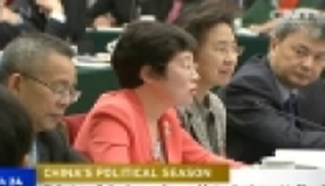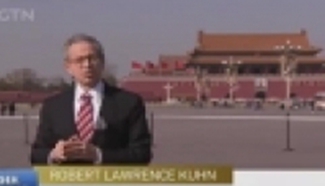SAN FRANCISCO, March 6 (Xinhua) -- A radio telescope array project led by the University of California, Berkeley, has received a grant of 5.8 million U.S. dollars to increase the number of dishes from planned 240 to 350, increasing the telescope's sensitivity to radio waves from the period after stars first formed in the early universe.
The grant from the Gordon and Betty Moore Foundation, established by Intel Corporation co-founder Gordon E. Moore and his wife Betty I. Moore in September 2000, to the Hydrogen Epoch of Reionization Array (HERA) project will help build 110 new telescopes, so as to creat a much more sensitive array able to detect faint radio signals at a wavelength of 21 centimeters.
The U.S. National Science Foundation (NSF) awarded the team 10 million dollars last year to boost the number of telescopes to 240, a project being built in South Africa that should be completed in 2018, when the Moore-funded expansion will begin. "Expanding HERA will help us map bubbles of ionization around early galaxies in our universe and will extend our ability to find the earliest signs of star formation in our universe," said HERA lead investigator Aaron Parsons, an associate professor of astronomy at UC Berkeley.
The radio waves to be explored by the array can potentially provide a history of the so-called "epoch of reionization," a period beginning about 400 million years after the Big Bang when the first stars started to form and emitted copious high-energy light that eventually ionized about 90 percent of the hydrogen atoms in the universe. That event allowed starlight to travel uninterrupted through the universe, into telescopes today.
The Big Bang, theorized as the beginning of the expansion of the universe, took place approximately 13.8 billion years ago.
Using next-generation instrumentation for 21-centimeter cosmology, HERA will probe the 3-D structure of the universe during the very first appearance of stars, galaxies and black holes. The first generation of hot massive stars and black-hole binaries filled the intergalactic medium with X-rays.
"These X-rays would have heated up the hydrogen surrounding galaxies and should produce detectable fluctuations in the 21-centimeter line," Jacqueline Hewitt, lead investigator on the Moore Foundation grant and director of the Massachusetts Institute of Technology (MIT) Kavli Institute for Astrophysics and Space Research, was quoted as saying in a news release from UC Berkeley on Monday. "Measurements of the 'epoch of X-rays' power spectrum could, in principle, distinguish between different scenarios for the very first generation of stars."
The grant from the Moore Foundation was awarded through the MIT, a member of the HERA collaboration that also includes other U.S. universities and research institutes and two institutes in Italy and South Africa.












